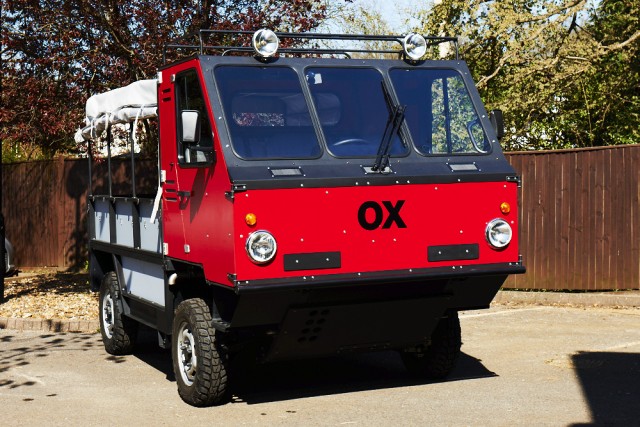Assembling your own car is, in motoring terms, analogous to designing and making your own clothes. Yes, you can do it and it might even be enjoyable, but you're surely much better off throwing €20 at Marks & Spencer than uncounted hours and money sitting in your garage trying to figure out how a differential goes together.
Kit cars of course have been popular through the year, and indeed the Caterham (neé Lotus) Seven has long been a touchstone for dynamic excellence. It's still available as a kit car, arriving at your house in boxes, but it takes a particularly dedicated type of car nut (one who probably favours anoraks and bobble hats all year round) to commit to auto-auto-construction.
It's through this prism that the new OX truck, developed for hard duties in developing countries, has become labelled the "Flat Pack Car." What utter nonsense it is to call it that, as it conjures images of bringing one home from IKEA and putting it together yourself once you've located an old Allen Key down the back of the man-drawer.
The OX is nothing like that, and doesn't pack remotely flat. It's powered by a 2.2-litre Ford Transit diesel engine, a unit not noted for its flatness and it's not designed to be built at home. Rather, its components can be gathered and prepared for shipping in around five hours, and the whole vehicle can be put together at its destination, by unskilled hands, in around eleven hours. With a central driving position (no need to spend costly development funds on right- or left-hand drive versions) and its Lego-Airport-Fire-Engine design, it's every inch the beast of burden that its name suggests. So flat-pack is simply a silly sobriquet designed to appeal to those who appreciate lazy labels. In fact, the OX has far more in common with Trevor Bayliss' clockwork radio - recognisable, familiar, simple and designed from the outset to be effective and useable in its target markets.
The OX has been developed by Sir Torquil Norman, a British entrepreneur and the man behind the Global Vehicle Trust. The idea is not just that the OX is simple, cheap and rugged but also that its local construction technique can provide a measure of local employment in the sub-Saharan African markets for which it has been designed.
"We have spent around $1.5 million bringing the OX to the working prototype but need a further $4.6 million to take the project to production-ready status," said Sir Torquil. "This is why we are now going public to highlight the need for investment and support in order to progress the project to completion. Our priority is to raise the funding to complete the testing and take the project to fruition. Our aim is that the OX will be purchased by charities, aid organizations and development programs, rather than private individuals. My dream is to one day see an OX in every village in Africa."
That's a dream that could well be realised as the OX has been designed for maximum utility. A 1,990kg payload weight gives it about double the haulage capacity of a conventional pickup truck while the rear load space has been designed to carry eight standard oil drums, 13 passengers or three pallets. It has a power take off system that allows it to act as a mobile water pump, sawmill or generator and all of this is contained in a vehicle just slightly shorter than a Skoda Yeti. The OX can wade through almost a metre of standing water and when it's all broken down for shipping, six of them can fit in a regular 40-foot container.
The fact that the OX is making its public debut in the same week as the astonishingly high-tech new Mercedes-Benz S-Class seems oddly appropriate. While there could not be a bigger gulf of difference between the OX and the partially-autonomous German limo with its perfumed air conditioning and 100% LED lighting systems, they are simultaneously emblematic of the widening chasm in global motoring between the spends and the spend-nots. With so much of the world's population still currently car-less, it is vehicles like the OX (in Africa) and, in more developed markets, low-cost brands such as Dacia and Tata that will bring motoring to the masses. At the spectrum's far-distant other end, cars like the S-Class are driving an apparently insatiable appetite for premium-brand goods that has seen BMW and Audi take top-five sales chart places in markets such as the UK, freezing out more traditional mid-market brands.
And it's those mid-market brands that are going to feel ever more chill winds unless they can successfully align themselves to one faction or the other. The week of the OX and S-Class has dawned, and for the likes of Ford, Peugeot, Opel and others, it's now time to go cheap, go big or go bust.

